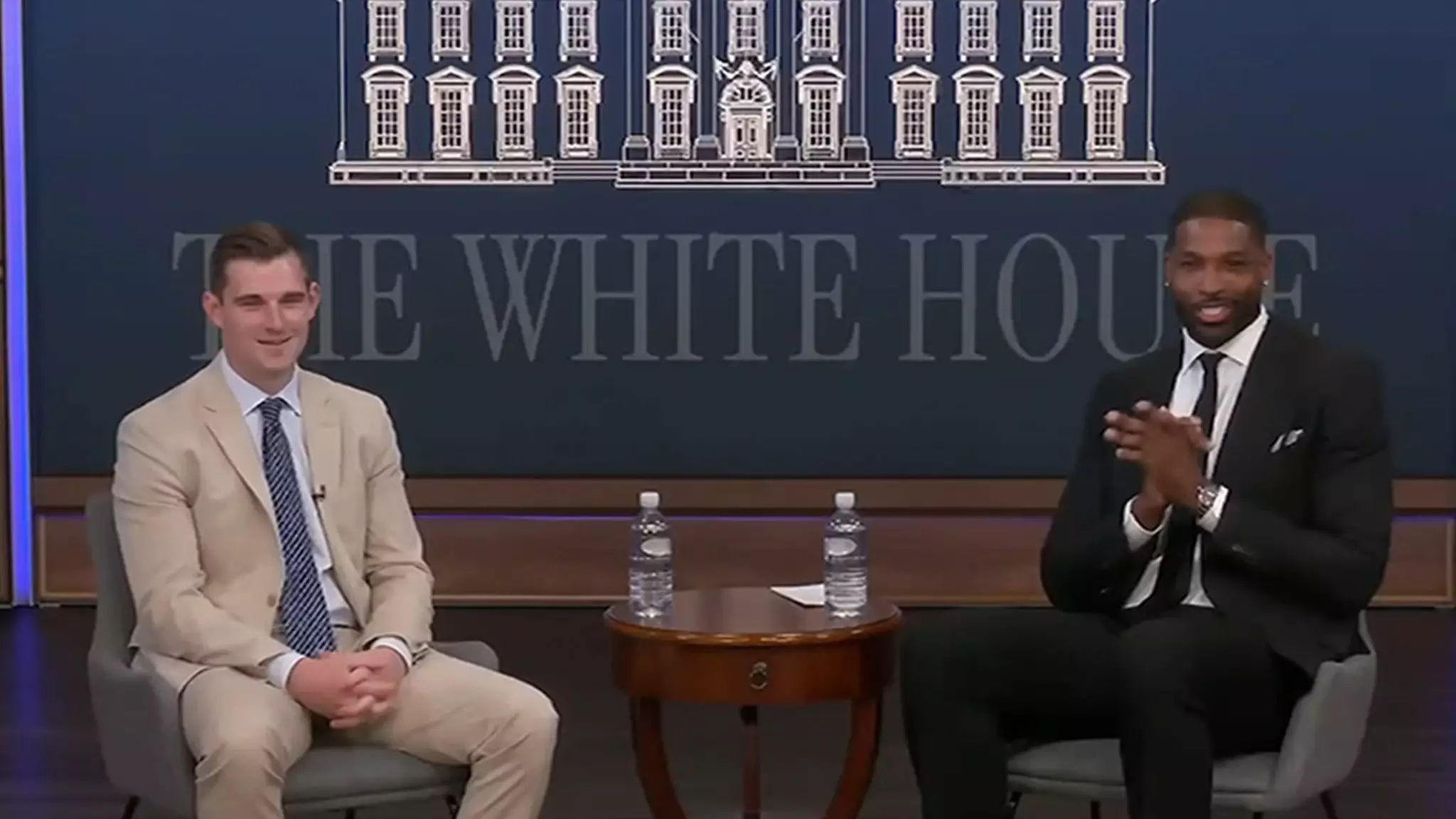Tristan Thompson, renowned NBA star and former champion, is stepping beyond the basketball court and into the realm of technological innovation. His recent return to the White House marks a significant pivot in his public persona—from athlete to outspoken advocate for blockchain and AI advancements. Unlike many sports figures who shy away from politics or emerging industries, Thompson immerses himself directly into the core discussions shaping America’s digital future. His participation in a top-tier conversation with a White House official underscores his genuine commitment to understanding and influencing policy changes around cryptocurrencies and blockchain technology. This move not only elevates his influence but also adds a surprising layer of credibility to the crypto movement, especially when he openly champions its transformative potential.
Championing a Digital Revolution Amid Skepticism
Thompson’s enthusiasm for crypto is palpable, rooted in a desire to demystify the sector’s misconceptions. His assertion that “crypto” is often misunderstood as mere scams ignores the revolutionary infrastructure it promises. By emphasizing how blockchain can revolutionize fields like healthcare, education, and real estate, he challenges the narrow perception that crypto is solely investment speculation. Critics may argue that athletes should stick to their sports, but Thompson’s optimistic outlook reveals a broader vision of societal progress. His narrative aims to shift the conversation from hype and fraud to practical applications that could fundamentally improve daily life. Such advocacy is vital, considering mainstream skepticism fueled by high-profile scams and volatile markets. His voice acts as a bridge, connecting the tech-averse with the much-needed innovation of decentralized finance.
Harnessing AI and Blockchain to Redefine Consumer Rights
Thompson’s interests aren’t confined solely to cryptocurrencies. His involvement with TracyAI, a platform integrating AI into sports broadcasting, indicates his multifaceted engagement with emerging technologies. Serving as Chief Content Officer, he envisions a future where AI and stablecoins converge to simplify transactions—eliminating the cumbersome banking processes that often complicate big purchases like homes. His radical idea of children buying homes with stablecoins exemplifies a forward-thinking mindset that embraces a cashless, frictionless financial system. Critics might dismiss this as utopian, but Thompson’s confidence in these innovations suggests he believes they could reshape everyday commerce. His vision pushes the boundaries of traditional finance, emphasizing speed, security, and ease of use as the pillars of the next-generation economy.
Personal Convictions Fueling Public Innovation
What sets Thompson apart is not just his technological curiosity but his ability to integrate personal dreams with broader societal ambitions. His hope that future generations will effortlessly buy homes using cutting-edge digital currencies reflects a desire for economic democratization. Rather than passive endorsements, he actively participates in discussions that influence policy and technological adoption. His approach suggests that athletes and entertainers can leverage their platforms for meaningful societal change, blending personal interests in AI and crypto with a desire to build a more inclusive financial landscape. This mindset could inspire others in the sports and entertainment industries to rethink their roles in technological advocacy.
Tristan Thompson’s evolution from a celebrated athlete to a proactive tech advocate demonstrates a sharp awareness of the transformative power of blockchain and AI. His bold engagement with policymakers and industry leaders underscores the potential for sports figures to shape not just culture but also economic policy. As the digital frontier expands, Thompson’s conviction that these technologies will reshape everyday life offers a glimpse into a future where blockchain and AI become ubiquitous tools for fairness, efficiency, and empowerment. His journey highlights that with influence comes responsibility—an opportunity to steer society toward innovation that truly benefits the many, not just the few.

